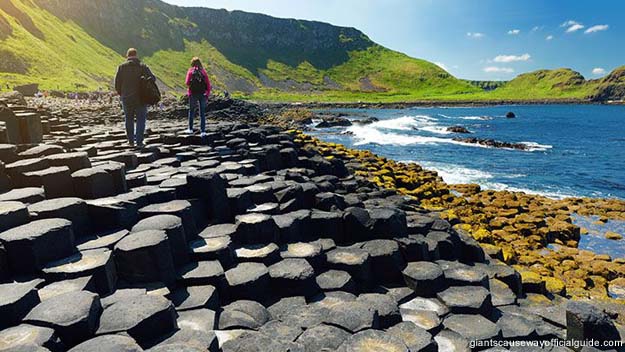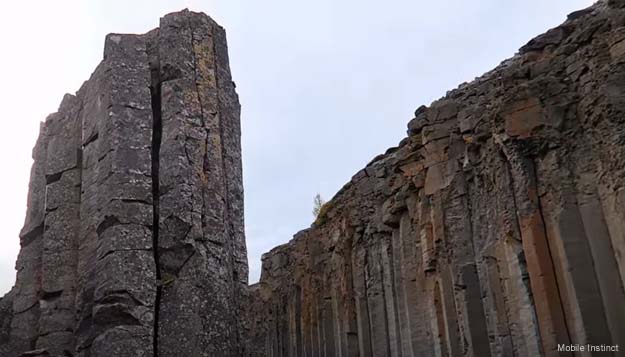 On the edge of Northern Ireland stand an almost incomprehensible set of basalt columns descending into the sea. The Giant’s Causeway, listed as a UNESCO World Heritage Site since 1986, is a set of 40,000 honeycomb patterned stone pillars, each typically with five to seven sides, which fit together almost as though they were built to be stepping stones.
On the edge of Northern Ireland stand an almost incomprehensible set of basalt columns descending into the sea. The Giant’s Causeway, listed as a UNESCO World Heritage Site since 1986, is a set of 40,000 honeycomb patterned stone pillars, each typically with five to seven sides, which fit together almost as though they were built to be stepping stones.
 For many locals, who regard the site as the eighth wonder of the world, the idea that the structure was built is part of an old Irish legend. In that legend, there lived an Irish giant Fionn mac Cumhaill (pronounced Finn McCool) and a Scottish Giant Benandonner who loathed each other. One day, Fionn was challenged by Benandonner for motives of either love or war. To settle the dispute, Fionn built the causeway across the North Channel to Scotland to reach his opponent. Scientists however link the formation of the stone pillars to a volcanic event that took place roughly 60 million years ago. A successive number of lava flows made their way to the coast and cooled once they made contact with the sea. According to Geologist Patrick McKeever, what happened next is akin to wet mud on a hot day. As the mud dries, it shrinks and then it cracks making these perfectly formed stepping stones.
For many locals, who regard the site as the eighth wonder of the world, the idea that the structure was built is part of an old Irish legend. In that legend, there lived an Irish giant Fionn mac Cumhaill (pronounced Finn McCool) and a Scottish Giant Benandonner who loathed each other. One day, Fionn was challenged by Benandonner for motives of either love or war. To settle the dispute, Fionn built the causeway across the North Channel to Scotland to reach his opponent. Scientists however link the formation of the stone pillars to a volcanic event that took place roughly 60 million years ago. A successive number of lava flows made their way to the coast and cooled once they made contact with the sea. According to Geologist Patrick McKeever, what happened next is akin to wet mud on a hot day. As the mud dries, it shrinks and then it cracks making these perfectly formed stepping stones.
The natural symmetry of the Causeway, along with the scenic beauty of the surrounding hills and sea, create a remarkable sight for visitors – one that may make them feel that they truly are walking in the footsteps of giants.
